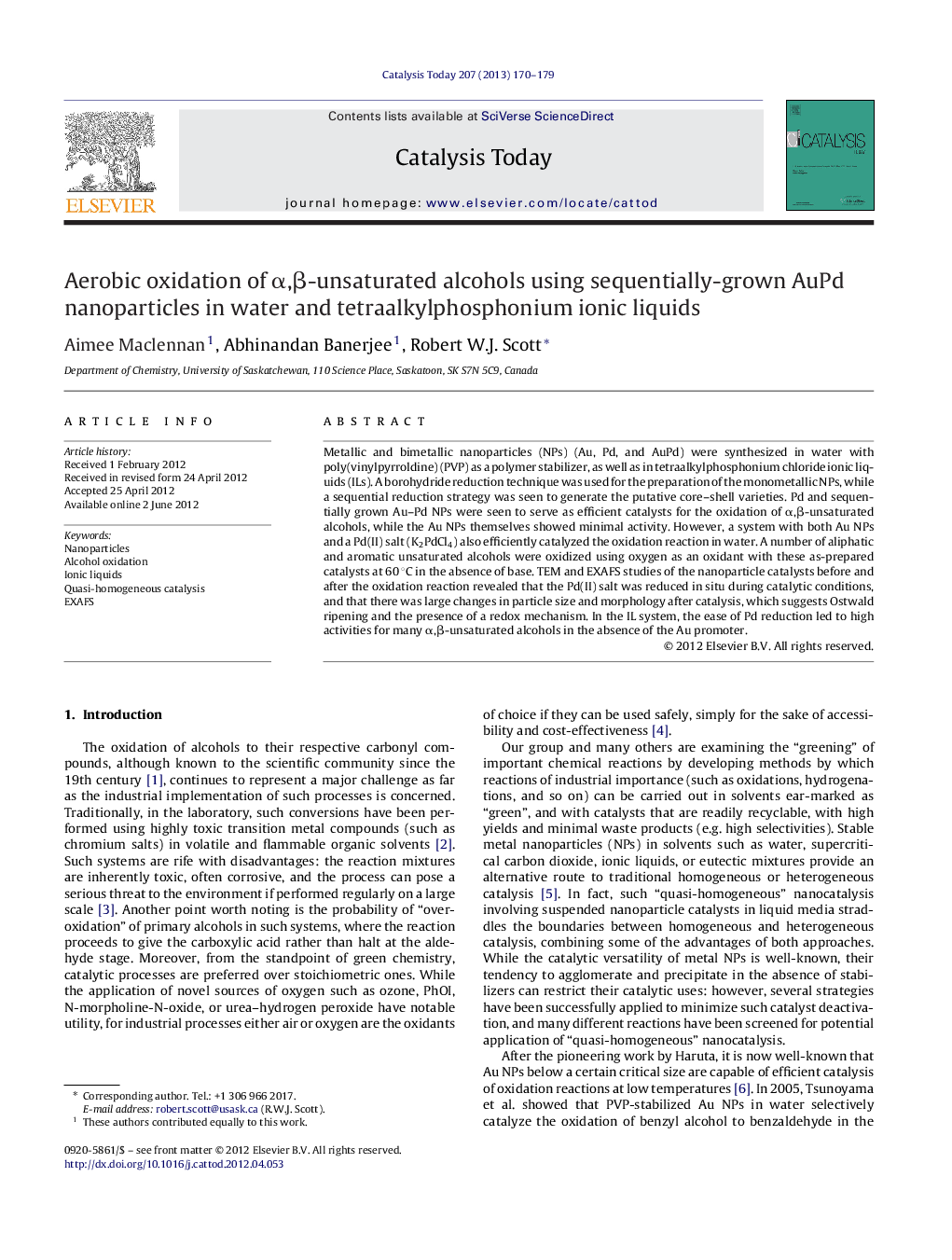| Article ID | Journal | Published Year | Pages | File Type |
|---|---|---|---|---|
| 54874 | Catalysis Today | 2013 | 10 Pages |
Metallic and bimetallic nanoparticles (NPs) (Au, Pd, and AuPd) were synthesized in water with poly(vinylpyrroldine) (PVP) as a polymer stabilizer, as well as in tetraalkylphosphonium chloride ionic liquids (ILs). A borohydride reduction technique was used for the preparation of the monometallic NPs, while a sequential reduction strategy was seen to generate the putative core–shell varieties. Pd and sequentially grown Au–Pd NPs were seen to serve as efficient catalysts for the oxidation of α,β-unsaturated alcohols, while the Au NPs themselves showed minimal activity. However, a system with both Au NPs and a Pd(II) salt (K2PdCl4) also efficiently catalyzed the oxidation reaction in water. A number of aliphatic and aromatic unsaturated alcohols were oxidized using oxygen as an oxidant with these as-prepared catalysts at 60 °C in the absence of base. TEM and EXAFS studies of the nanoparticle catalysts before and after the oxidation reaction revealed that the Pd(II) salt was reduced in situ during catalytic conditions, and that there was large changes in particle size and morphology after catalysis, which suggests Ostwald ripening and the presence of a redox mechanism. In the IL system, the ease of Pd reduction led to high activities for many α,β-unsaturated alcohols in the absence of the Au promoter.
Graphical abstractFigure optionsDownload full-size imageDownload high-quality image (102 K)Download as PowerPoint slideHighlights► AuPd nanoparticles in water and in an ionic liquid examined for the oxidation of α,β-unsaturated alcohols. ► Au promoter is needed for high activity of Pd in aqueous systems. ► Pd salts in the presence of water undergo an in situ reduction onto Au nanoparticle promoters. ► Pd nanoparticles in tetraalkylphosphonium chloride have high activity due to high rate of oxidation of Pd in this medium.
